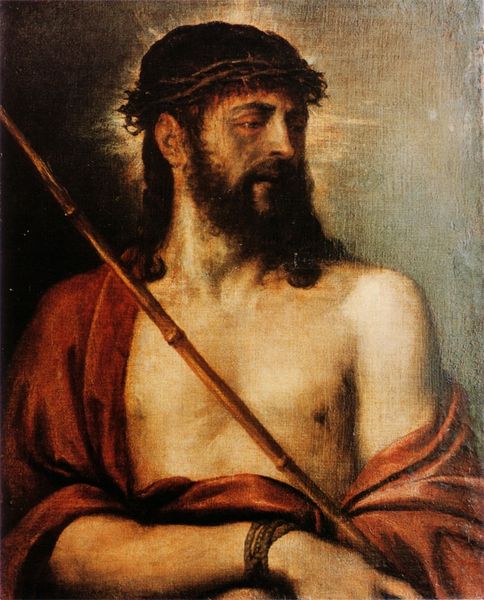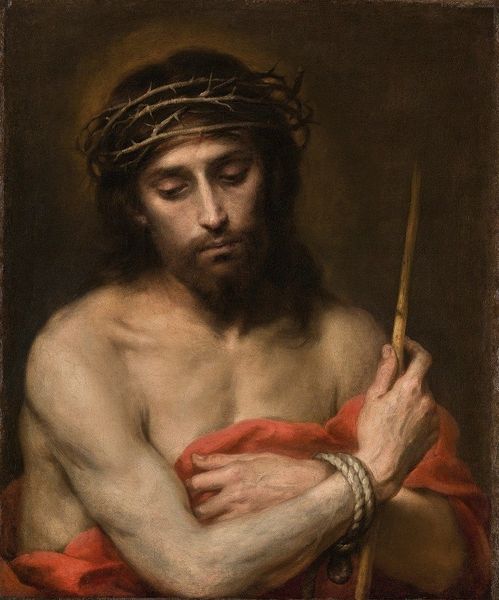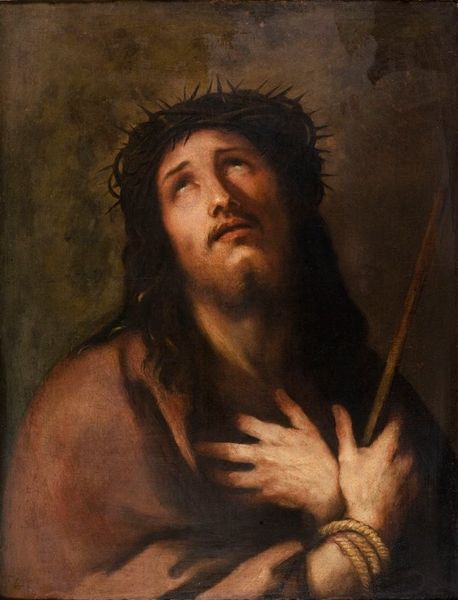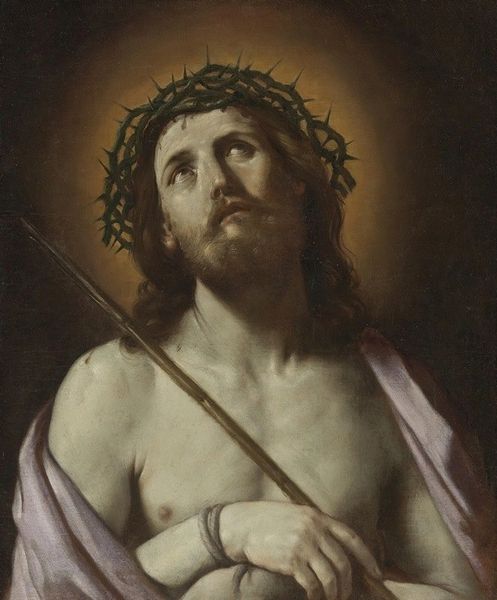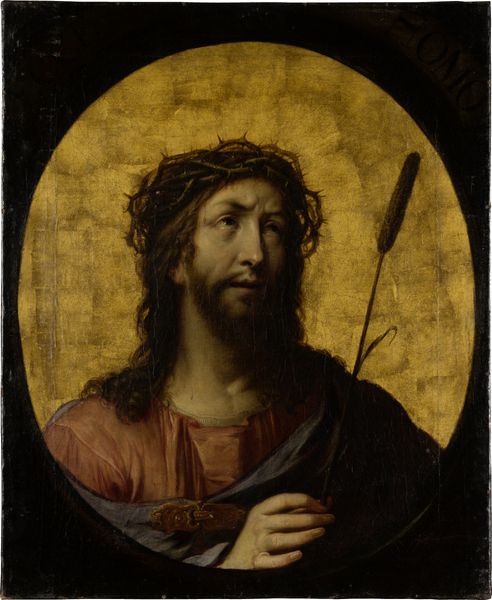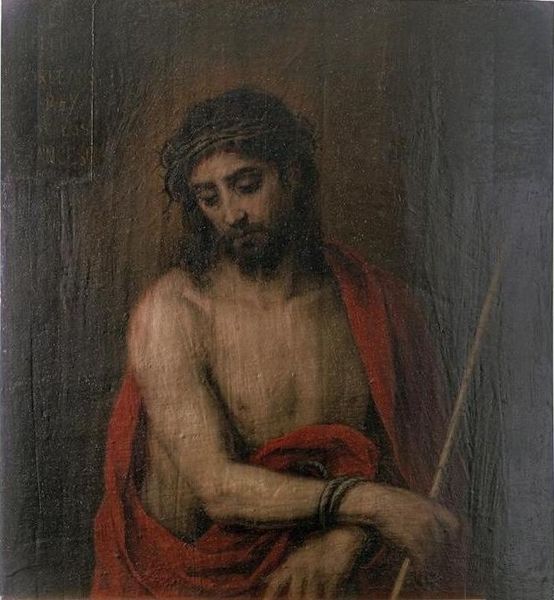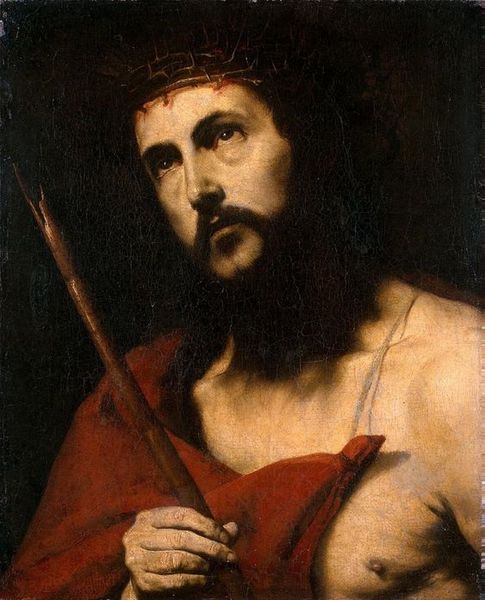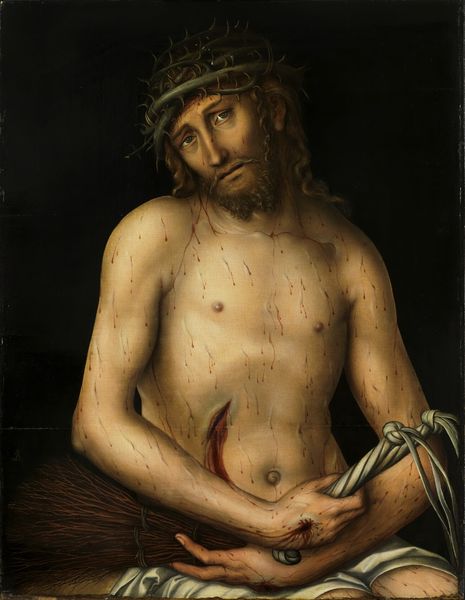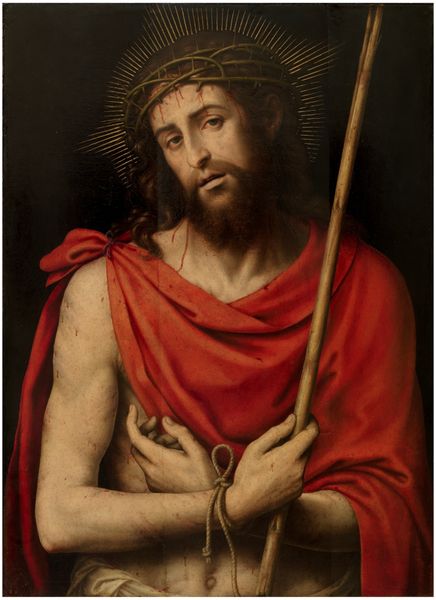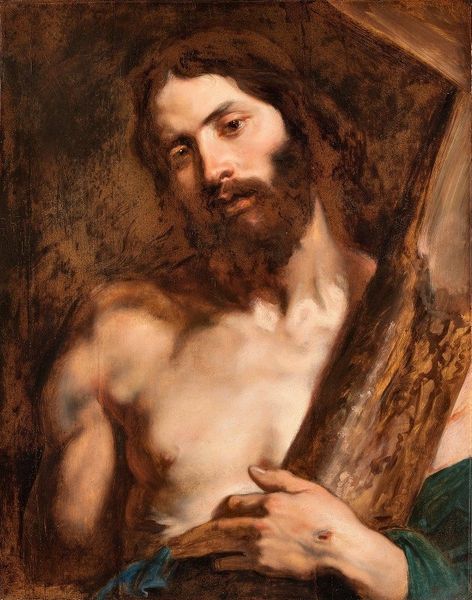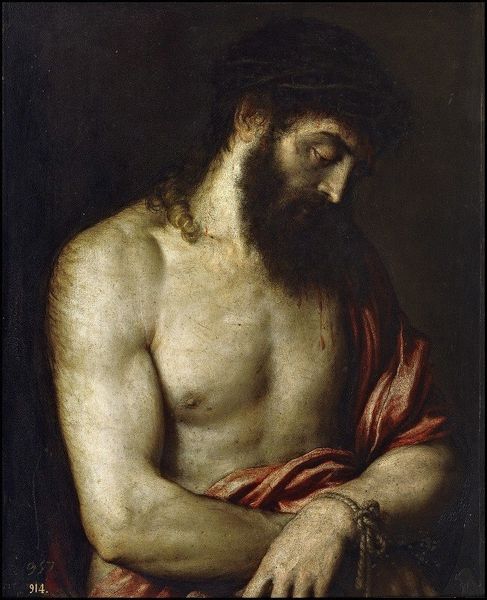
Copyright: Public domain
Titian’s “Ecce Homo” presents Christ crowned with thorns, a symbol of mockery and suffering within Christian iconography. This motif of the crown, initially a sign of royalty and power, is here inverted. The thorns evoke not triumph, but pain and humiliation. It’s a stark contrast to the laurel wreaths of Roman emperors, reminding us how symbols are mutable, their meanings shifting with cultural context. This twisted crown appears in various forms throughout art history, each iteration echoing the deep-seated human capacity for cruelty and redemption. Looking closer, consider how the image engages our collective memory. The downturned gaze of Christ, the blood trickling down his forehead; these details trigger a visceral response. It is a shared understanding of suffering passed down through generations. The power of this image lies not just in its religious narrative, but in its ability to tap into our deepest, most primal emotions, reminding us of the cyclical nature of human experience.
Comments
No comments
Be the first to comment and join the conversation on the ultimate creative platform.
